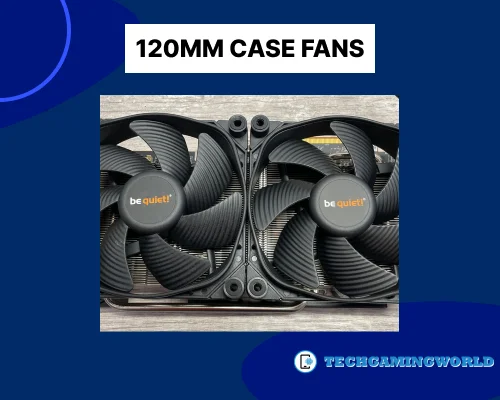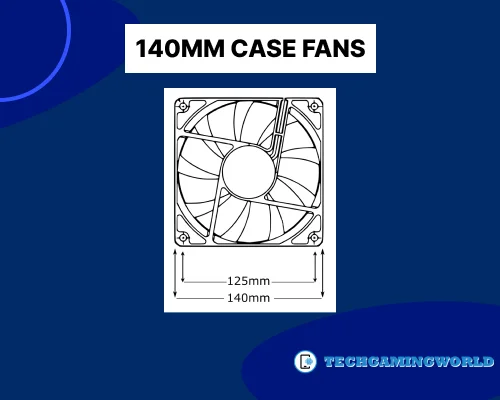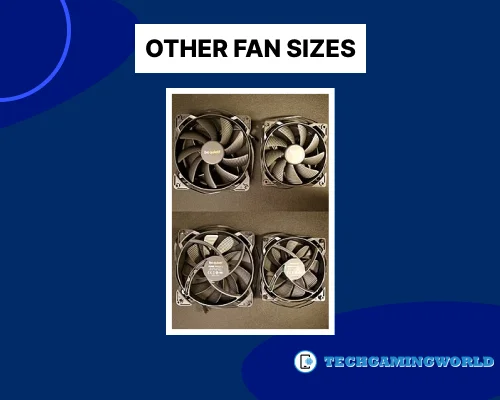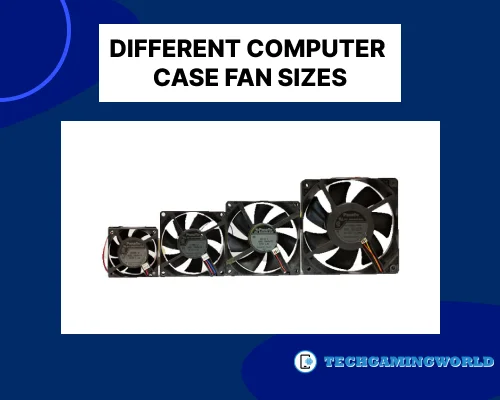Best Guide Different Computer Case Fan Sizes from 40 to 20mm Fans 2024
Do you want to know about Different Computer Case Fan Sizes and want to choose a perfect one once. Then you are o the right place. Computer case fans play a vital role in maintaining optimal airflow within a computer system, ensuring efficient cooling and preventing heat-related issues. However, selecting the right fan size can be confusing, given the variety of options available.
In this article, we will explore the different computer case fan sizes commonly found in the market, their advantages and limitations, and provide insights to help you make an informed decision when choosing the appropriate fan size for your system.
Comparison Table
To summarize the key differences between the different computer case fan sizes, here’s a comparison table: you can also read 3-Pin Vs 4-Pin Fan Connectors For CPU.
| Fan Size | Advantages | Limitations |
|---|---|---|
| 80mm | – Space-efficient | – Lower airflow |
| – Lower power consumption | – Higher noise levels | |
| – Cost-effective | ||
| 120mm | – Versatility | – Space considerations (for smaller cases) |
| – Balanced performance | ||
| – Availability | ||
| 140mm | – Increased airflow | – Size constraints |
| – Lower noise levels | ||
| – Compatibility | ||
| Other | – Specific cooling requirements | – Limited availability for some sizes |
| Sizes | – Varying performance and noise characteristics | |
Different Computer Case Fan Sizes
80mm Case Fans
80mm case fans are compact and commonly used in small form factor (SFF) cases or as supplementary fans for specific cooling needs. While they are not as commonly used in modern, full-sized cases, they still offer several advantages:

Advantages of 80mm Case Fans
Space-Efficient: 80mm fans are ideal for cases with limited space or small form factor builds.
Lower Power Consumption: Due to their smaller size, 80mm fans typically consume less power.
Cost-Effective: 80mm fans are generally more affordable compared to larger fan sizes.
Related: Types of CPU Sockets.
Limitations of 80mm Case Fans
Lower Airflow: Due to their smaller size, 80mm fans may have lower airflow rates, limiting their cooling capacity.
Higher Noise Levels: Smaller fans often need to rotate faster to achieve sufficient airflow, resulting in higher noise levels.
120mm Case Fans
120mm case fans are widely regarded as the standard fan size for most computer cases. They strike a balance between size, airflow, and noise levels, making them a popular choice among PC builders.

Advantages of 120mm Case Fans
Versatility: 120mm fans can be used as intake or exhaust fans, offering flexibility in positioning and optimizing airflow.
Balanced Performance: These fans provide a good balance between airflow and noise levels, making them suitable for a wide range of applications.
Availability: Due to their popularity, 120mm fans are readily available with a wide variety of models and options.
Limitations of 120mm Case Fans
Space Considerations: While 120mm fans are generally compatible with most cases, some smaller form factor or compact cases may have limitations in accommodating them.
140mm Case Fans
140mm case fans have gained popularity in recent years due to their larger size, which allows for enhanced airflow and quieter operation compared to smaller fans.

Advantages of 140mm Case Fans
Increased Airflow: 140mm fans typically offer higher airflow rates compared to 120mm fans, resulting in improved cooling performance.
Lower Noise Levels: Due to their larger size, 140mm fans can achieve the same airflow as smaller fans at lower RPMs, leading to quieter operation.
Compatibility: Many modern cases now include support for 140mm fans, making them a viable option for a wide range of builds.
Limitations of 140mm Case Fans
Size Constraints: While 140mm fans are compatible with many cases, it’s important to ensure that your case has sufficient clearance to accommodate them.
Other Fan Sizes
Aside from the common 80mm, 120mm, and 140mm case fans, there are additional sizes available, albeit less common. These include 92mm, 200mm, and 230mm fans. Here’s a brief overview:

92mm Case Fans: Similar to 80mm fans, 92mm fans are suitable for small form factor cases or specific cooling requirements. They offer a compromise between size and performance.
200mm and 230mm Case Fans: These larger fans are often found in high-end, full-sized cases. They provide excellent airflow and cooling capabilities, but compatibility may be limited to specific case models.
Conclusion
Choosing the right computer case fan size is crucial for maintaining efficient cooling and optimal airflow within your system. Consider factors such as available space, cooling requirements, noise preferences, and case compatibility when making a decision. Whether it’s the compact 80mm fans, versatile 120mm fans, or the airflow-enhancing 140mm fans, each size offers unique advantages and limitations.
By understanding these differences and analyzing your specific needs, you can select the ideal fan size to achieve effective cooling and improve the overall performance and longevity of your computer system. So we hope you are now well aware of Different Computer Case Fan Sizes.

About Author
I am EDIE MILES, the founder of TechGamingWorld, a blog. in which is an online gaming community dedicated to providing the latest news and reviews about the world of online games, including PC and console games. Read More







